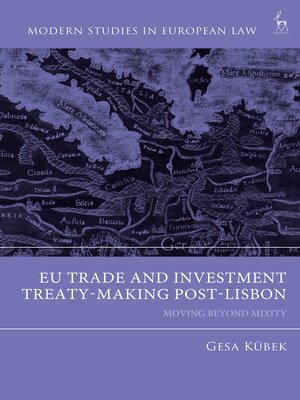EU Trade and Investment Treaty-Making Post-Lisbon
ebook ∣ Moving Beyond Mixity · Modern Studies in European Law
By Gesa Kübek

Sign up to save your library
With an OverDrive account, you can save your favorite libraries for at-a-glance information about availability. Find out more about OverDrive accounts.
Find this title in Libby, the library reading app by OverDrive.



Search for a digital library with this title
Title found at these libraries:
| Library Name | Distance |
|---|---|
| Loading... |
This book offers the first thorough legal analysis of the practice of mixity since the Lisbon Treaty, providing the perspectives of international, EU, and national law.
It sets out a detailed theoretical understanding of mixity, the common commercial policy, and the recent case law of the EU Court of Justice. It assesses recent practice and current challenges, such as the non-ratification of mixed agreements, ensuring parliamentary participation in EU treaty-making, the new architecture for concluding EU trade and investment agreements, as well as the new trade agreement between the EU and the UK post-Brexit. In so doing, the author argues that in the field of trade and investment, mixity is no longer a procedural technique to overcome legal uncertainties about competence allocations between the EU and the Member States. Instead, mixity has become a deliberate substantive design choice. This brings a fresh and innovative perspective to a key tenet of EU external relations law.
It sets out a detailed theoretical understanding of mixity, the common commercial policy, and the recent case law of the EU Court of Justice. It assesses recent practice and current challenges, such as the non-ratification of mixed agreements, ensuring parliamentary participation in EU treaty-making, the new architecture for concluding EU trade and investment agreements, as well as the new trade agreement between the EU and the UK post-Brexit. In so doing, the author argues that in the field of trade and investment, mixity is no longer a procedural technique to overcome legal uncertainties about competence allocations between the EU and the Member States. Instead, mixity has become a deliberate substantive design choice. This brings a fresh and innovative perspective to a key tenet of EU external relations law.







